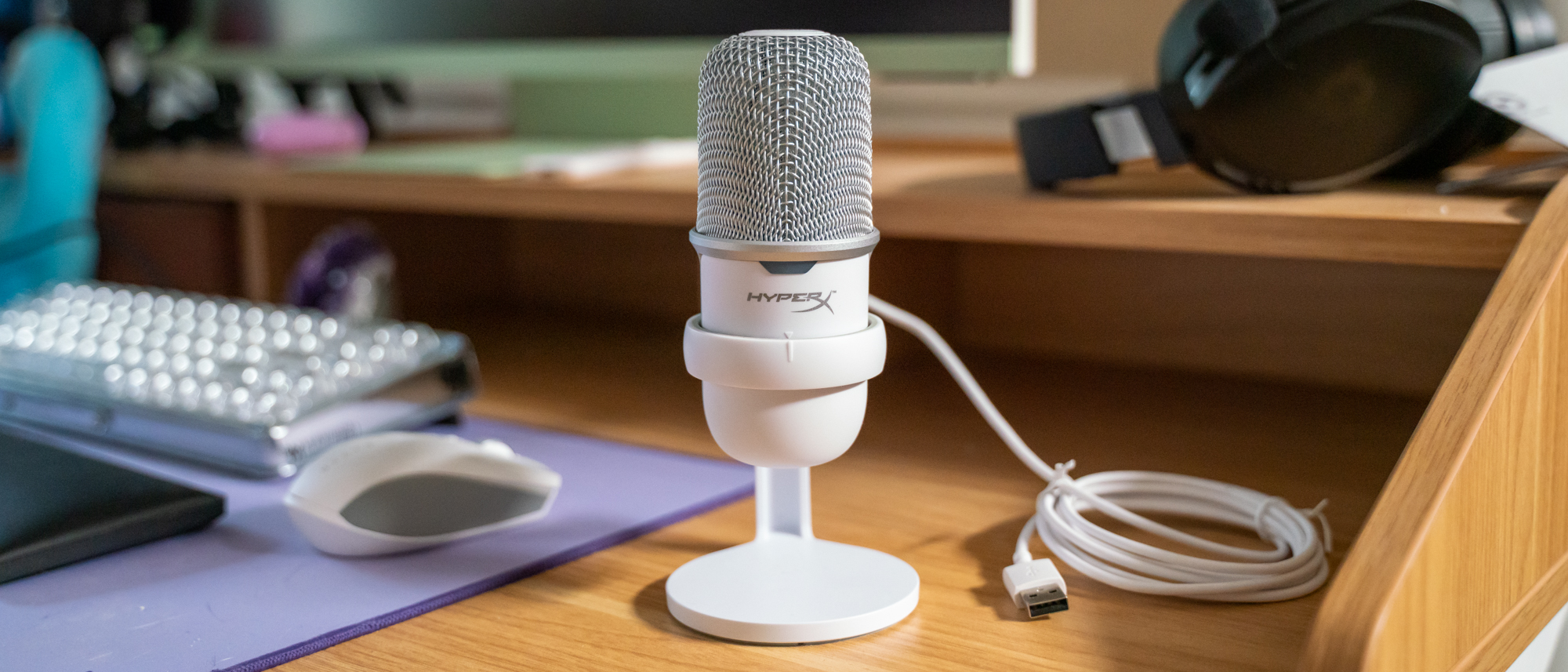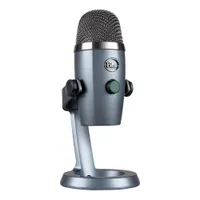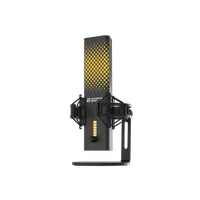TechRadar Verdict
The HyperX SoloCast is slim on features, which isn't surprising considering its affordable price tag, but it picks up sound clearly, offers a decent amount of background noise rejection, and is easy for a beginner to use. It’s a cardioid mic, but it picks up sound from both in front and behind, which could be advantageous for some users.
Pros
- +
Affordable
- +
Audio is fairly clear and clean
- +
Plug and play
- +
Travel-friendly
Cons
- -
Setup a little tricky sometimes
- -
Picks up vibrations very easily
- -
Picks up from the back, only a little muffled
Why you can trust TechRadar
HyperX SoloCast: One-minute review
The HyperX SoloCast is the mic we expect to get at its price point. It’s a little light on features, as with most peripherals that save you some money, and its sound pickup isn’t perfect. For example, while HyperX markets it as a cardioid mic – i.e., one that's most sensitive to sound coming from the direction in which it's pointed – it picks up sound from both in front and behind, which could either be an advantage or a disadvantage, depending on your recording needs.
However, it delivers where it matters at this price: picking up sound clearly and cleanly. It also offers decent background noise rejection, a compact design that makes it travel-friendly, and an articulating stand that turns 90 degrees to the left and 90 degrees to the right, and flips about 140 degrees back.
The SoloCast has aged well: although it's now more than two years old, it’s still one of the best USB mics to consider if you’re seeking something affordable.
HyperX SoloCast: Price and availability
- How much does it cost? $69.99 / £64.99 / AU$109
- Where can you get it? Available now in the US, UK and Australia
Polar pattern: Cardioid pattern
Sample rate: 24-bit/96 kHz
Connection type: USB
Weight: 0.57lb (mic only)
The HyperX SoloCast has a list price of $69.99 / £64.99 / AU$109, putting it somewhere in the low-to-mid-price range. However, because it was released in late 2020 it's possible to pick it up for less – at the time of writing, for example, you can find it for $39.99 in the US and £49 in the UK.
There are other options, however, if you’re looking for something around the same price or even cheaper. The well regarded Samson Meteorite is currently priced as low as $29.99 in the US and AU$50 in Australia (it's a similar price to the SoloCast in the UK), while the Jlab Go Talk, which we're in the process of reviewing, is $39 in the US and £50 in the UK.
- Value: 4 / 5
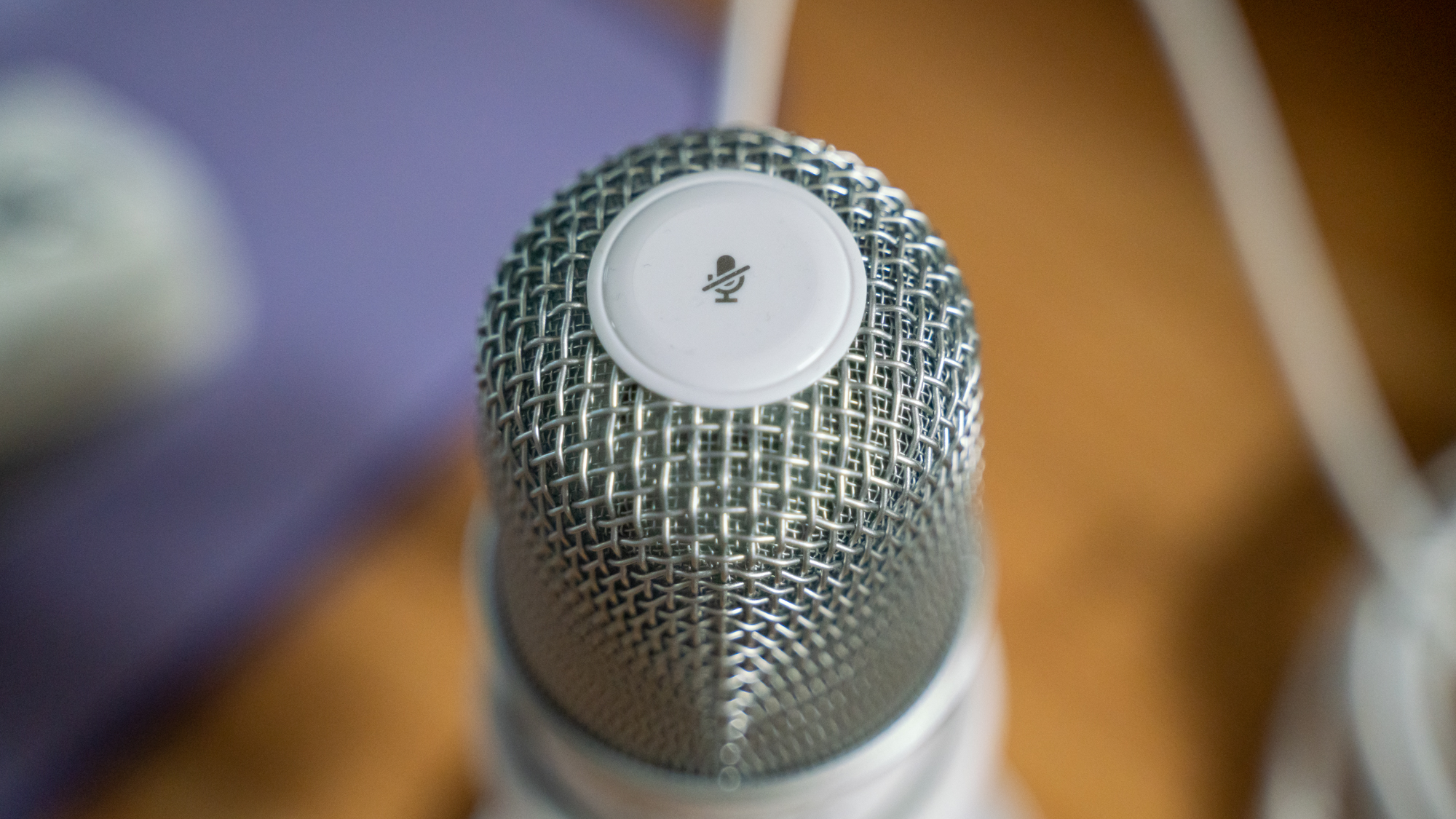
HyperX SoloCast: Design and features
- Tricky setup
- One-button control
- Articulating stand that turns 90 degrees to the left/right
The HyperX SoloCast is a plug-and-play mic, which means it should be relatively easy for a novice to use. However, our test unit proved to be a little tricky to set up. The first time we plugged it into our laptop and used it with GarageBand, it was clearly picking up audio, but there was no output. We had to close the software and open it back up for the mic to start working.
While it wasn't clear if the issue was with the mic or the software, we tested other USB mics at the same time with the same software, and we didn’t have that problem. Once we got the SoloCast working, however, we didn’t encounter any further problems.
Sign up for breaking news, reviews, opinion, top tech deals, and more.
At 6.85 x 3.82 x 3.07 inches (17.4 x 9.7 x 7.8cm), the HyperX SoloCast is a compact mic, which makes it very travel-friendly. Of course, a design this small also has its downsides, and the physical controls are limited to just one: a tap-to-mute button at the top of the mic. When this is pressed, the light above the HyperX logo on the front of the mic blinks slowly.
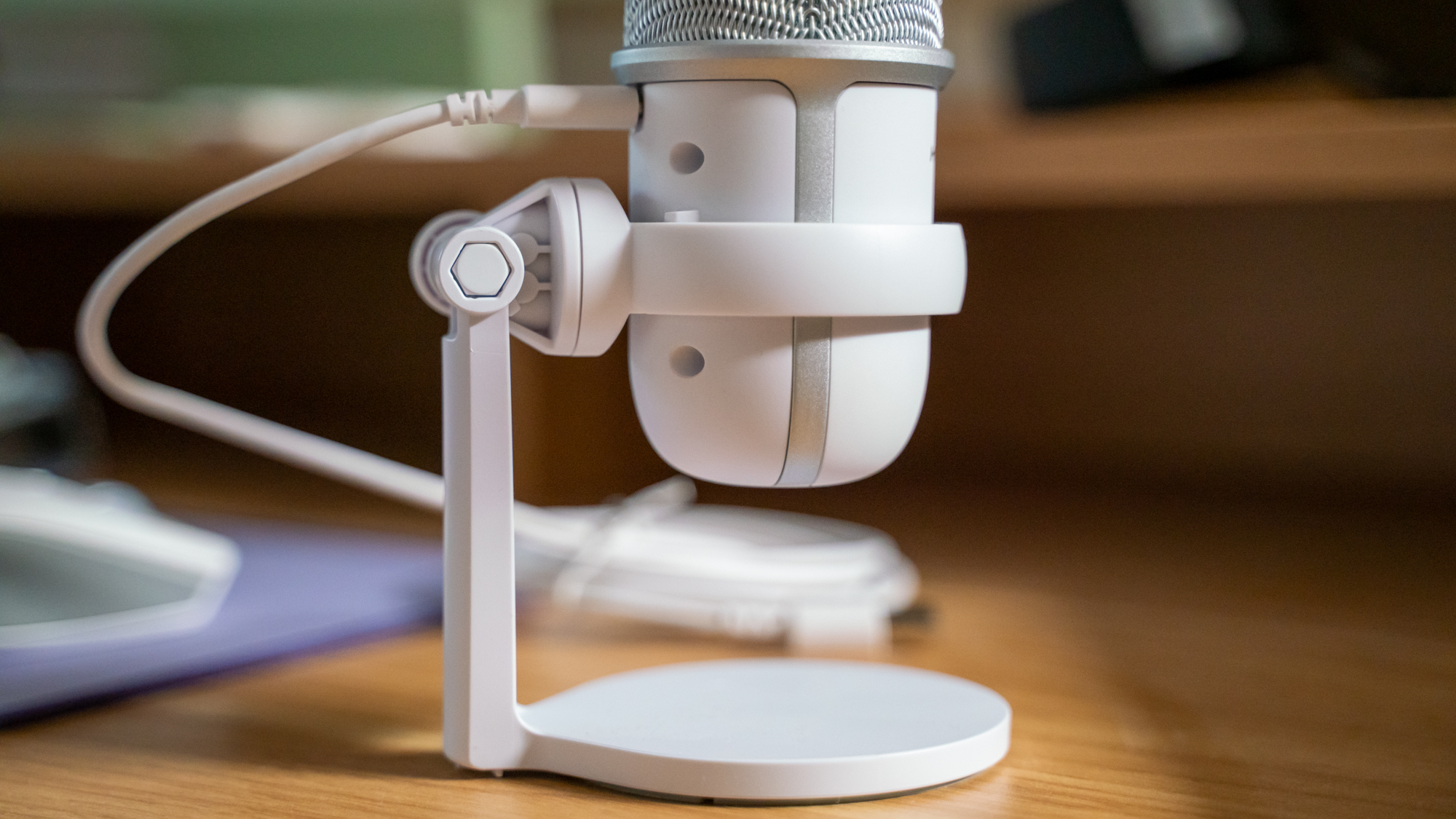
The mic comes with an articulating stand, which rotates 90 degrees to the left and right and tilts back about 140 degrees. That should give you enough angles for basic recording, but if you’re looking to mount it higher or in a different orientation, the stand is removable, and the mic itself has two different female threads (3/8-inch and 5/8-inch) so you can mount it on a more versatile stand or boom arm.
While the mic has a USB-C port, the included cable still needs a USB 2.0 port, which might discourage some Ultrabook users.
- Design: 4 / 5
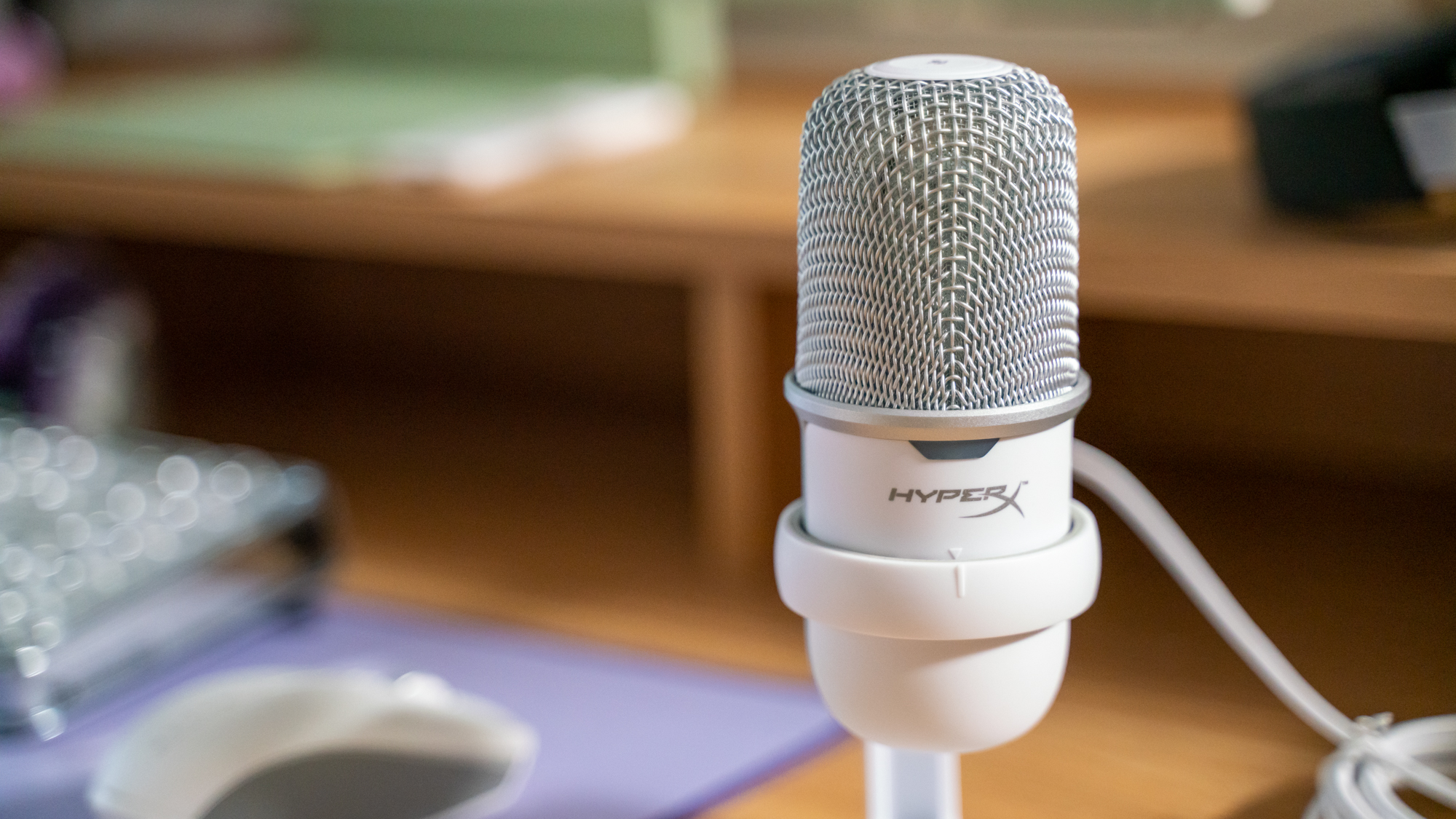
HyperX SoloCast: Performance
- Cardioid mic but bi-directional pick-up
- Clear and clean sound
- Picks up vibrations pretty easily
As with all mics, you'll experience the proximity effect when recording too close to the HyperX SoloCast. However, during testing, we found that a foot is the ideal distance for it to pick up your voice clearly while minimizing the variation. So, you don’t need a lot of space to be using this USB mic.
It's being marketed as a cardioid mic, which means it should pick up sound mostly from the direction in which it's facing. But, for better or worse, our experience with it has been different – it picks up sound both from in front and from behind, making it more bi-directional in practice. The sound it picks up from behind, in fact, is just as loud as the sound it picks up from in front, albeit more muffled.
If you absolutely need a cardioid mic, you might be turned off by that. However, if you’re not very picky, or if you need something for your podcast or your streaming videos in which you’re chatting with another speaker, this might actually be a good thing.
Though it is on the cheaper end, the HyperX SoloCast offers high-res 24-bit recording, and picks up sound clearly and cleanly – especially, as mentioned, from in front. And, that’s really all that matters if you’re looking for something to meet your basic recording needs. What’s more, it also has decent background noise rejection. We had our old, pretty loud AC unit running during testing, and while it did pick up its humming, the sound wasn’t prominent enough to distract you from the important content.

Perhaps the biggest downside here is that it picks up vibrations pretty easily when on its included stand. Even light tapping on the desk it’s on will ruin your otherwise clean audio, so we would mount this on a proper stand for better results.
- Performance: 4 / 5
Should I buy the HyperX SoloCast?
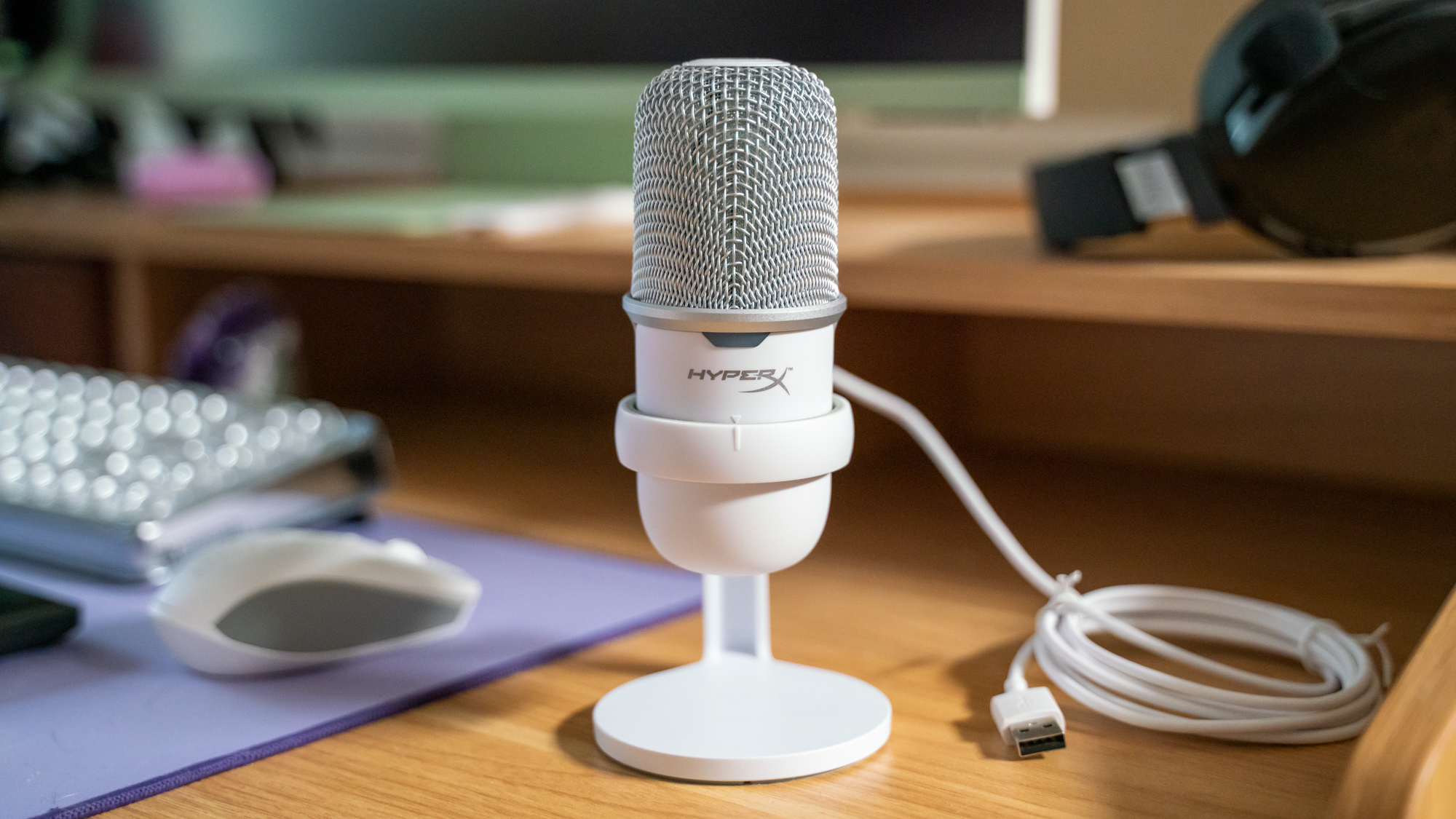
Buy it if...
You want good-quality sound for less
Despite being one of the cheapest USB mics on the market, the HyperX SoloCast delivers great-quality, high-res 24-bit recordings with clean and clear audio.
You need something travel-friendly
This is a compact USB mic that’s decently lightweight. It’s a great travel companion, with two thread options for mounting.
Don't buy it if...
You require a top-quality mic for top-quality recordings
Being a cheap mic, it doesn’t have the absolute best background noise and vibration rejection.
You need an omnidirectional USB mic
The HyperX SoloCast is a cardioid mic – although, for better or worse, it picks up sound bi-directionally.
You want all the features
It's pretty slim on features and physical controls, which isn’t surprising considering the price. If you want something more feature-rich, however, this isn’t the option for you.
Also consider
Blue Yeti
The Blue Yeti is one of the most popular USB mics on the planet for a reason. It’s plug-and-play, it's relatively affordable – even if it’s a little pricier than most mics of the USB variety – and it comes with four polar patterns for a versatile option. And audio sounds great.
Read our full Blue Yeti review
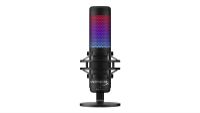
HyperX QuadCast S
We've not had the pleasure of reviewing this mic yet, but from everything we've seen, it offers pretty much the same as the XSTRM (below) – though with a slightly higher price to account for the four polar pattern options and customizable RGB.
XSTRM USB Mic
The XSTRM USB Mic is not only a stylish mic, it's packed with features including input gain control, hi-fidelity recording, and AI noise reduction, even if that last one is a bit underwhelming. It also comes with a pop stand, something that usually costs extra.
Read our full XSTRM USB mic
HyperX SoloCast: Report card
| Value | Despite having minimal features, the HyperX SoloCast delivers excellent, 24-bit recording resolution for less than $100/£100. | 4 / 5 |
| Design | It’s a compact, one-button USB mic with a stand that offers some articulation and two female threads for mounting. | 4 / 5 |
| Performance | The HyperX SoloCast delivers top-quality recordings that are crisp and clean, and decent background noise rejection. | 4 / 5 |
| Total | This is a great-value USB mic if you want something that records clean and crisp audio. It’s not perfect, but it’s a terrific option at its price point. | 4 / 5 |
- First reviewed January 2023
How we test
We pride ourselves on our independence and our rigorous review-testing process, offering up long-term attention to the products we review and making sure our reviews are updated and maintained - regardless of when a device was released, if you can still buy it, it's on our radar.

Michelle Rae Uy is the former Computing Reviews and Buying Guides Editor at TechRadar. She's a Los Angeles-based tech, travel and lifestyle writer covering a wide range of topics, from computing to the latest in green commutes to the best hiking trails. She's an ambivert who enjoys communing with nature and traveling for months at a time just as much as watching movies and playing sim games at home. That also means that she has a lot more avenues to explore in terms of understanding how tech can improve the different aspects of our lives.
